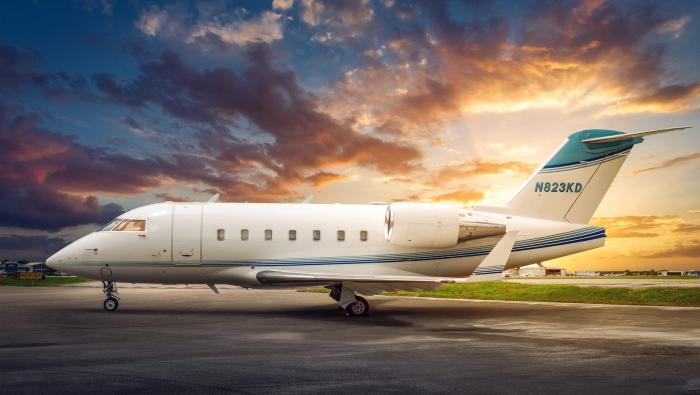Flight departments are taking advantage of downtime due to the coronavirus shutdowns to conduct training and prepare for busier times while also maintaining readiness in case emergency trips become necessary. The steps some flight departments are taking were highlighted during NBAA’s News Hour webinar yesterday—"Maintaining Flight Department Readiness"—which was recorded for those who couldn’t participate.
“The situation is fluid and evolving,” warned moderator Jo Damato, NBAA v-p of educational strategy and workforce development, and she noted that the information shared with attendees was specific to March 31.
VF Corp chief pilot Brad Self explained that his flight department stopped operations on March 16, but the company is maintaining flight crews and technicians on standby. “They’re doing basic functions on the airplanes,” he said. “We’re going to come up with a plan to stay current if this keeps going on.” Otherwise, he and his team are working on internal projects and communicating remotely via the Zoom platform, including using AviationManuals for updating flight operations manuals and other flight department documents.
“Prior to the outbreak, we were moving at a high operational pace,” said James Stone, Aflac director of aviation services. The company operates two aircraft, but once the stay-at-home recommendations took hold, no more travel was scheduled. “Right now we’re in a wait-and-see mode,” he said. “We’re officing from home, and maintenance and flight crews are on standby.”
Meanwhile, to help keep pilots current and the airplanes healthy, the Aflac pilots are flying once a week. “Today the airplanes are sitting consistently,” he said, “and we’re pairing the need to keep crews’ heads in the game with the need to exercise the airplanes. It’s not a perfect system, but it keeps us in readiness mode and the aircraft ready to go.”
AviationManuals CEO Mark Baier and Kevin Honan, the company’s senior advisor operations manuals and emergency response plans, outlined some of the ways flight operations can use the coronavirus downtime to improve internal processes and safety procedures. “This is a good time to test the validity and robustness” of company emergency response plans and safety management systems (SMS), Baier said. While employees are working remotely, this is an opportunity to make sure the plans work in a remote-work scenario. “Incidents and hazards don’t happen at opportune moments when we’re all in the office,” he said.
“We’ve seen operators try to improve their processes,” said Honan. “A big one is the flight planning phase on alternates. And the emergency response plan, what if someone becomes ill, like the flight crew, overseas? A lot of coordination is needed. This is a great time to examine these procedures.”
With regard to keeping employees safe and healthy during the crisis, Stone admitted that physical distancing makes this difficult. His department is limiting the number of contacts the employees have and assessing the risks when people need to work together, for example, when flying the airplanes or maintenance work where more than one technician is needed. Those pilots who are flying as a crew are paired together and won’t fly with others. And no one is allowed to go to the company hangar unless they have a specific task to accomplish and no one else is there. “We’re a close-knit bunch,” he said, “and this is requiring a lot of thinking about how we can stay apart.”
He added that some training has been postponed, but the department does hold weekly check-in meetings online. “This gives us a chance to talk,” he said, “and see how they’re doing with their families.”
VF Corp’s Self said every flight department employee has additional duties on top of their pilot, technician, or other job and they can work on these collateral duties during this downtime. Some of this work involves going over the flight operations manual and company policies and updating them where necessary.
Self and his team are carefully monitoring pilot currency, using the PFM software that the department runs on. He expects that some limited flying will start soon, not only to keep the airplanes in good shape but also for basic pilot currency.
Other considerations for flight departments during this time include the important work of being ready for an emergency flight to pick up a company employee, which will likely involve a lot of preparation. Many countries are strictly limiting aviation operations, although medevac flights are generally allowed.
Honan pointed out that it would be a good idea to consult with third-party medical providers such as Medaire and look for information at the Centers for Disease Control and World Health Organization. Crews need to consider hygiene and physical distancing while traveling, whether there are even hotels available, if FBOs are open, and what to do if a crewmember gets sick during the trip.
Crewmembers must feel free to give anonymous feedback as well, Baier explained. “It’s important to go to the highest standard of safety to make everyone is comfortable in times like this,” he said, “and putting policies and procedures in place and respecting their sensitivities.”







